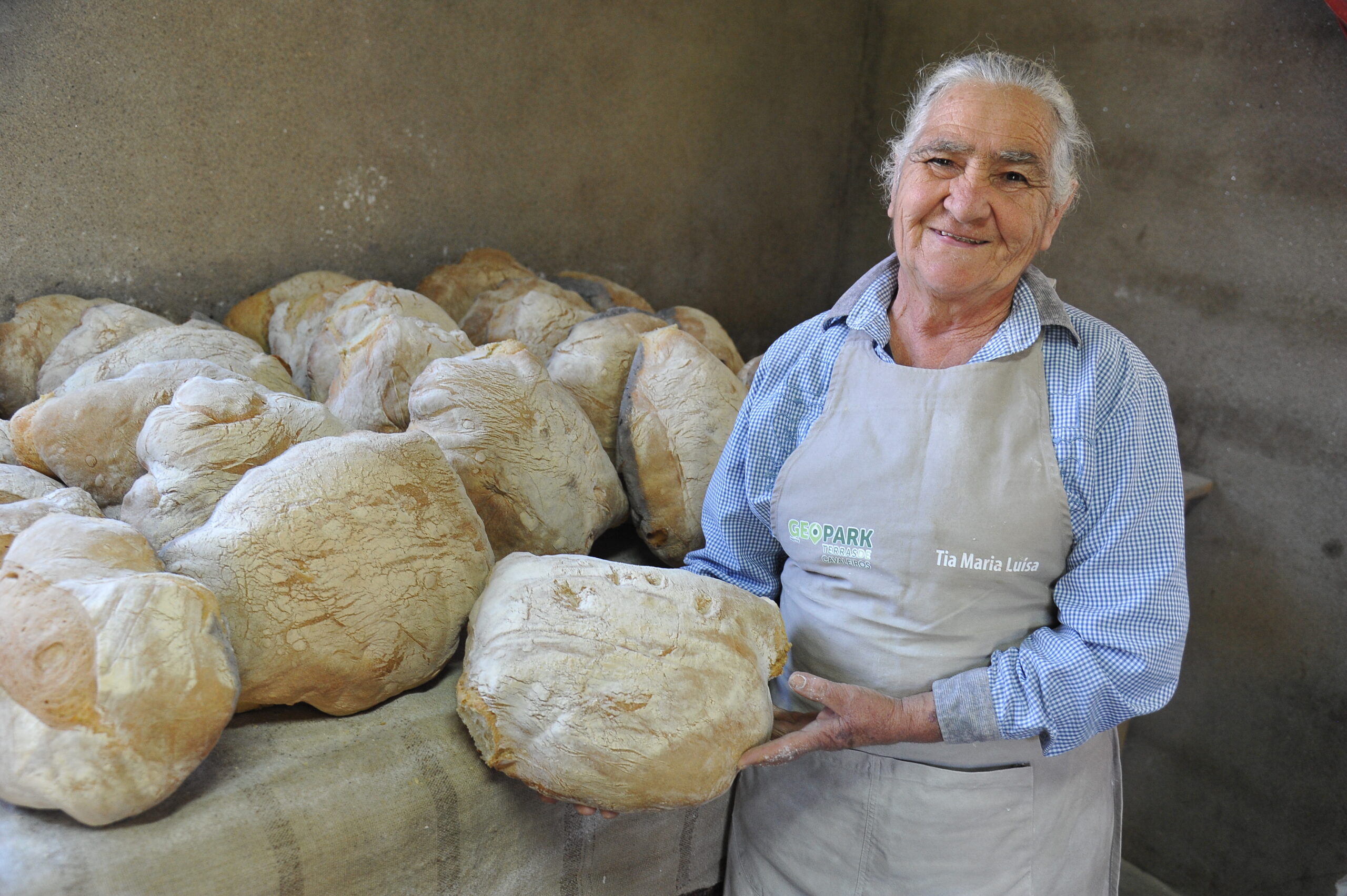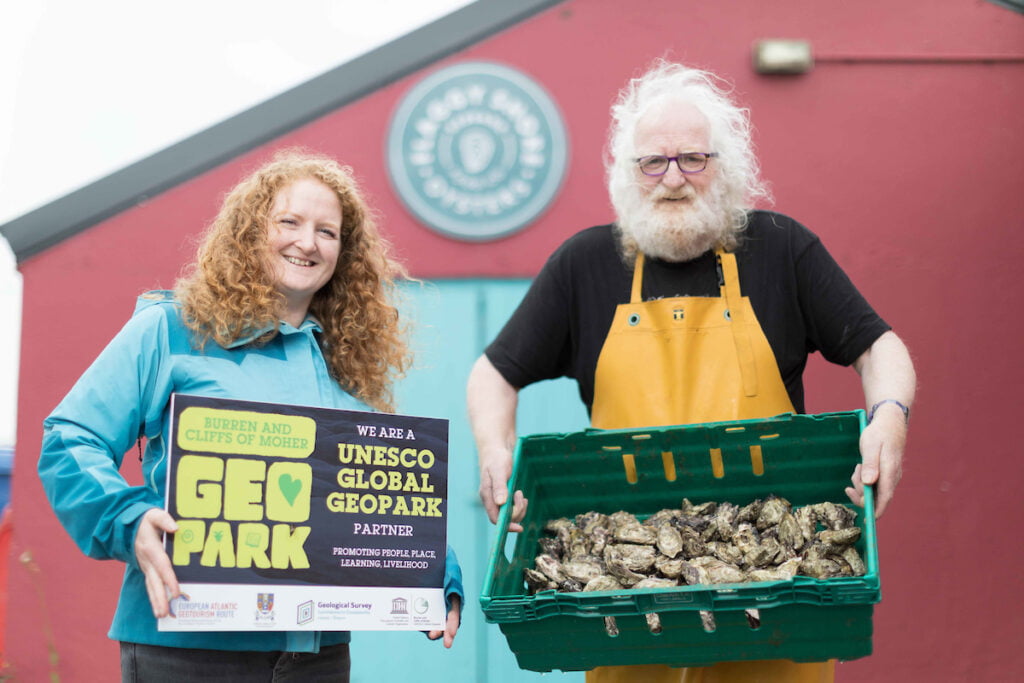Photo: Eva Hegarty, Burren&Cliffs UGG
Objectives
The project goal is to carry out research on the link between geoheritage, geodiversity,
ecosystem services, food production and sustainable development through the implementation
of an innovative brand – GEOfood.
The project objectives, along five years are:
1. Gathering data, mapping the resources and conducting research
This objective will transform GEOfood from a development initiative and brand into a research topic.
In this first stage of the project we need to understand the following:
- What are the components of GEOfood, their definitions and relations?
- How can we connect the local geological heritage and geodiversity within ecosystem services that relate to the food production and within cultural-knowledge-education services?
- What are the roles of geodiversity, soil, climate, food production, ecosystem services, biodiversity, gastronomic customs, identity, globalisation in each UGGp?
- What is needed to make GEOfood to be a viable geoproduct?
- What variables need to be considered to make GEOfood applicable in different areas with different natural and cultural conditions?
In order to answer these questions, the following actions will be undertaken:
1.1. Establish a baseline
Establishing a baseline for all researchers involved, that will comprise the main concepts, their
definitions, criteria and indicators to be taken into account. The project will focus on researching
the connections between geology and agriculture that will include but is not limited to:
- soil formation
- mineral content in soils
- water content within soils
- the relationship to agriculture
- biodiversity
- hydrogeology and hydrology
Knowledge of these aspects is essential for complex concepts like geoproducts and GEOfood
because they stand at the intersection of tangible and intangible resources, including biotic and
abiotic factors, identity and commerce.
1.2. Gather local data for GEOfood indicators
This action will gather local data to further define the indicators established in action 1.1. Each of the participating scientists and teams will work in their respective territories to gather information for a common comparative study. The research should have an integrated multidisciplinary approach and will include aspects of geodiversity as well as the ecosystem
services framework. Result: There will be 26 studies produced, one for each territory involved in the project; a database comprising all the concepts and indicators, a form of spatial visualisation of the database (GIS)

1.3. Comparative study
A comparative study between all the 26 territories associated with the GEOfood will be produced, taking into consideration the data gathered in action 1.2. The resulting scientific IGCP 2020 Project Proposal From 7 review and analysis will explore the linkages between each territory’s natural resources and community lifestyle, from the perspective of local food production, and how this can be used as an indicator of identity in all its cultural, social and economic aspects. The resulting report will form the scientific background for applied actions for the rest of the project. Result: a scientific report as bases for hands on approach

1.4. Create an online tool
Creation of an online tool associated with the GEOfood official website www.geofood.no for gathering data, networking among the participating researchers and for communicating the results.
Result: an online tool

2. Developing methodologies for GEOfood assessment, implementation and result
evaluation
Based on the scientific results of objective 1, objective 2 will create the guidelines for further practical actions. This will be delivered through the development of methodologies not only in the sense of formal documents, but also through innovative methods such as online assessment quizzes and checklists. Objective 2 comprises the following actions:
2.1. Assessment methodology
Creating an assessment methodology for the GEOfood potential of a particular area,
2.2. Implementation methodology
Creating an implementation methodology by offering a step by step guide for the implementation of GEOfood, including handbooks,
2.3. Evaluation methodology
Creating an evaluation methodology for quality assurance and standardised results which can be further compared between territories.
3. Designing and producing a GEOfood toolkit, comprising printed materials
(leaflets, manuals), training courses, videos, on-line tools and games
Objective 3 includes the practical actions of applying the scientific research and implementing GEOfood in the project territories.

4. Implementing the concepts on local level (best practice exchanges, courses,
meetings, consultancy, participation)
This objective will make the connection between theoretical research and applied action. The purpose is to extend the use of GEOfood beyond the participating territories, and use it as a model for geoheritage-driven sustainable development. The actions will be implemented in all the participating territories by the responsible partners. The following actions will be undertaken:
4.1. Identifying the potential of GEOfood certification
Using the results of activity 1.2. and the methodology from activity 2.1 the potential for GEOfood certification will be developed.
4.2. Engagement with local communities
This action involves engagement with local partners and the community into GEOfood-related actions (presentations, events, courses, seminars) using the toolkit developed in activity 3.1. Participatory exchange spaces will be encouraged between different local actors to present the data obtained in objectives 1 and 2, which will allow for the exchange of experiences, the transfer of information and local knowledge between the group in charge of the project and the local communities.
4.3. Evaluating the results of the GEOfood implementation
Evaluating the results of the GEOfood implementation using the methodology developed in
activity 2.3.
Results: A local evaluation report for each of the territories, one overall evaluation report.
5. Disseminating the results in the scientific community
(meetings, conferences, articles)

